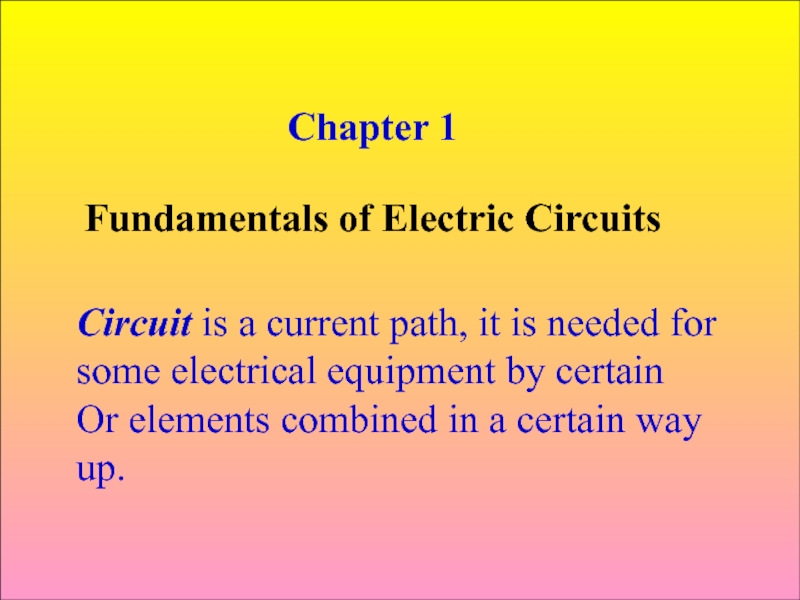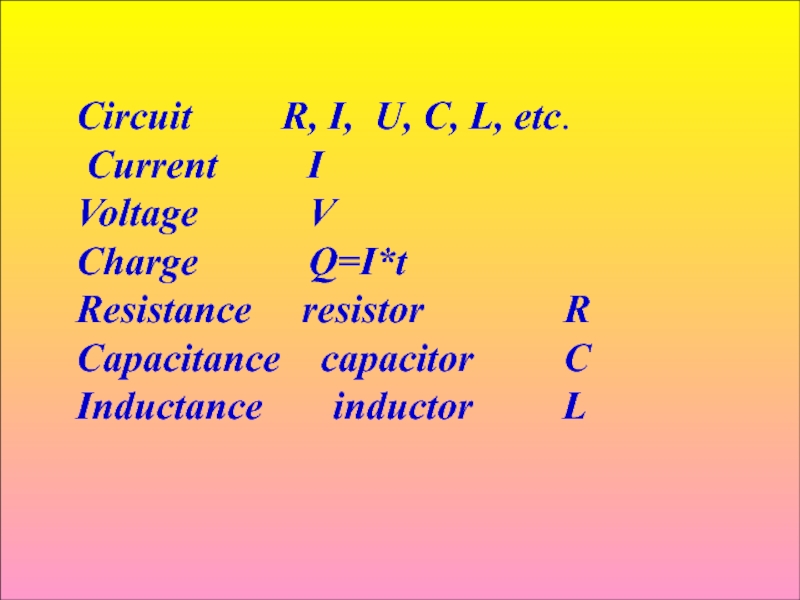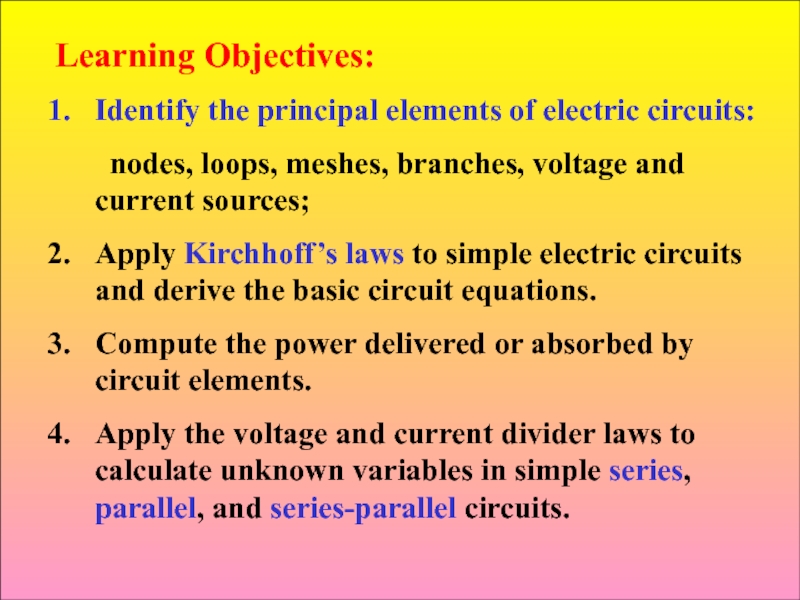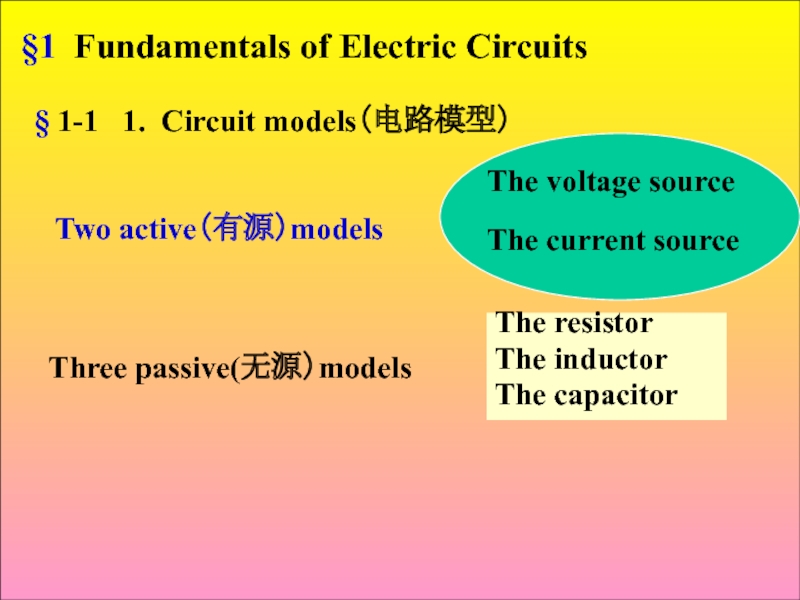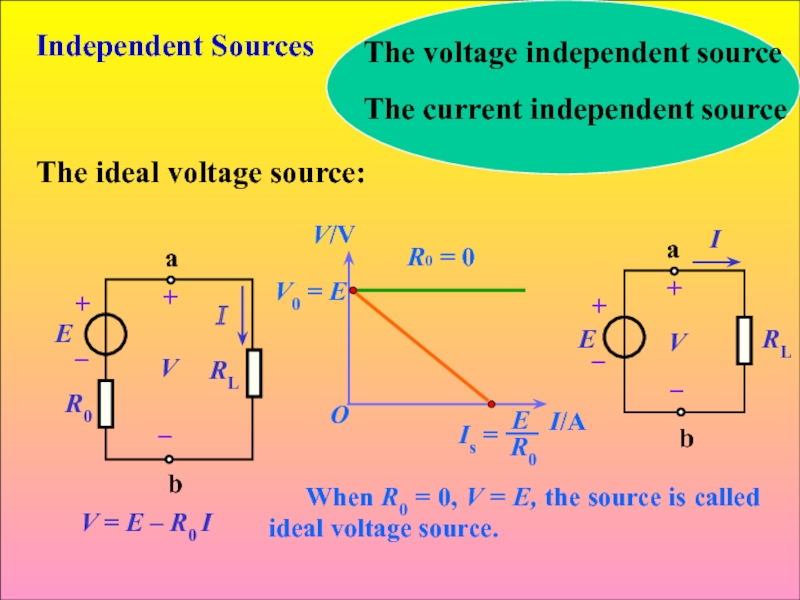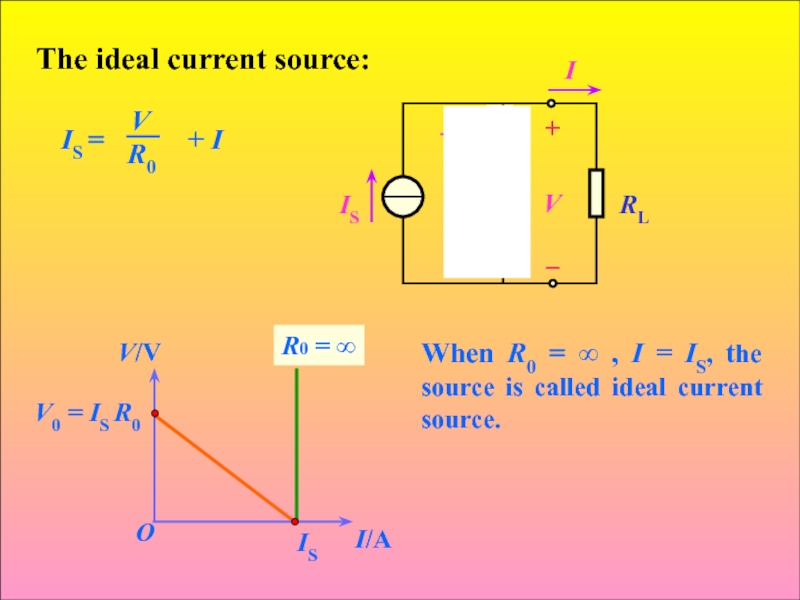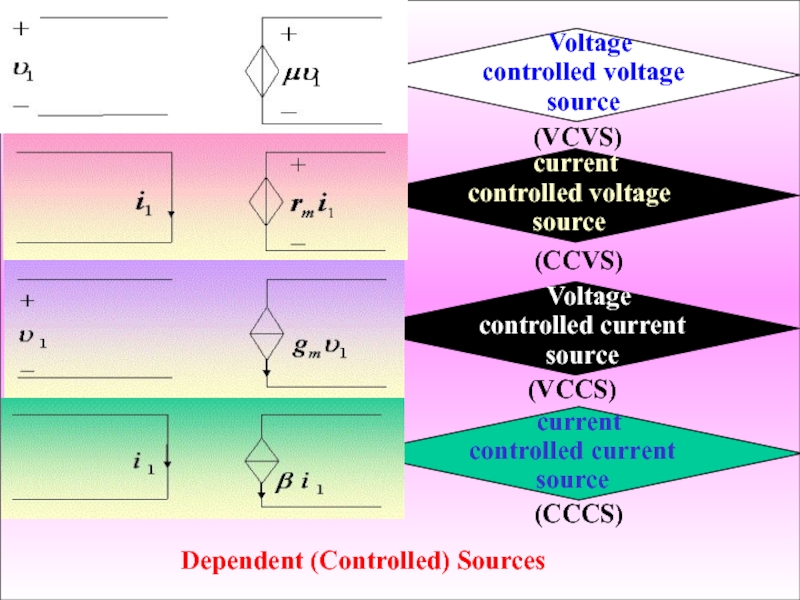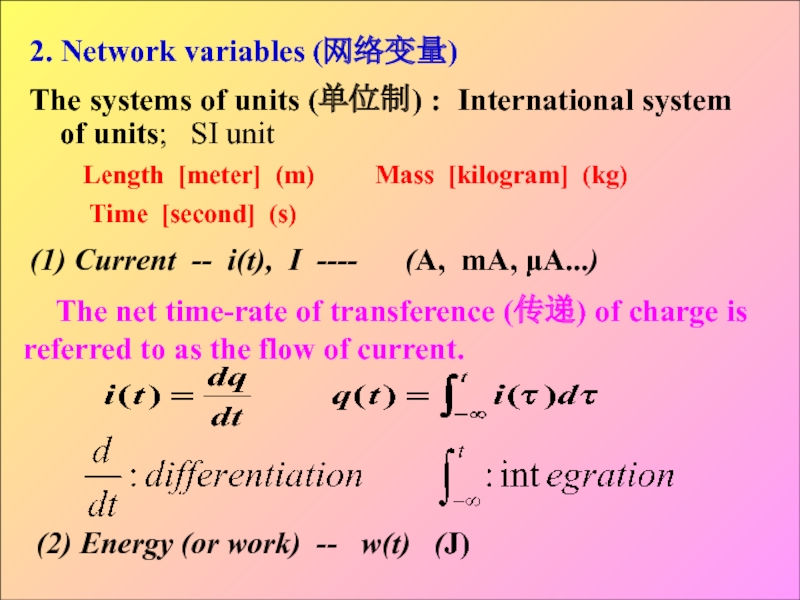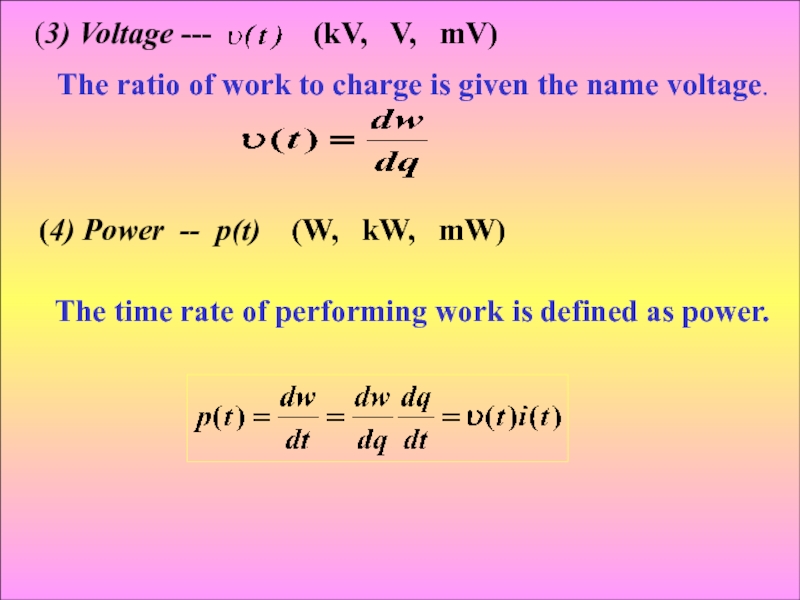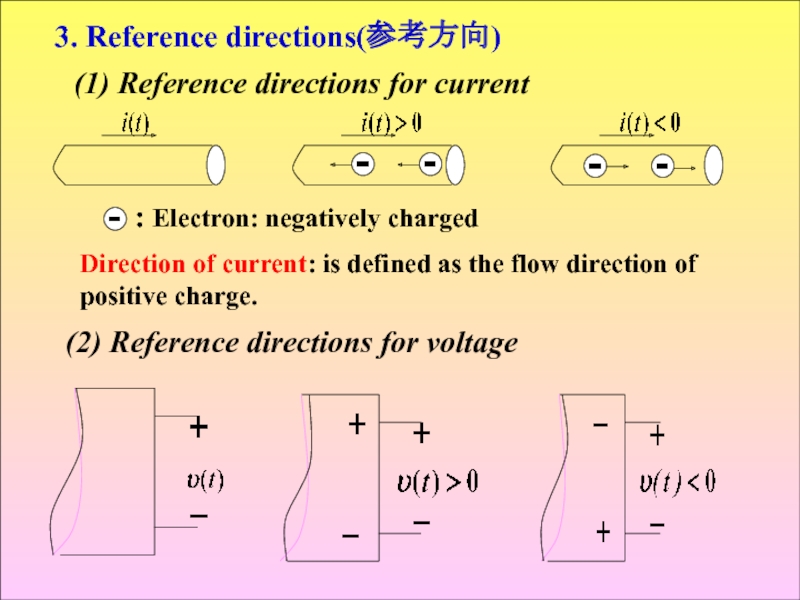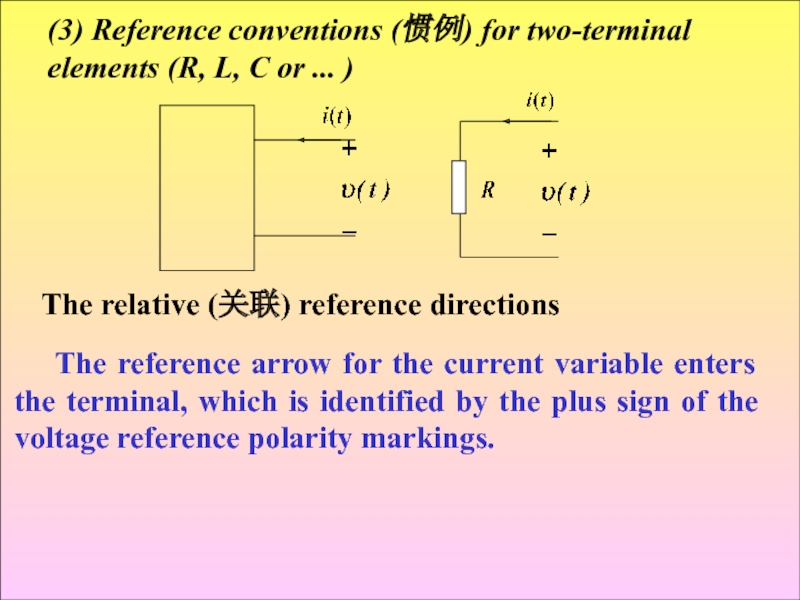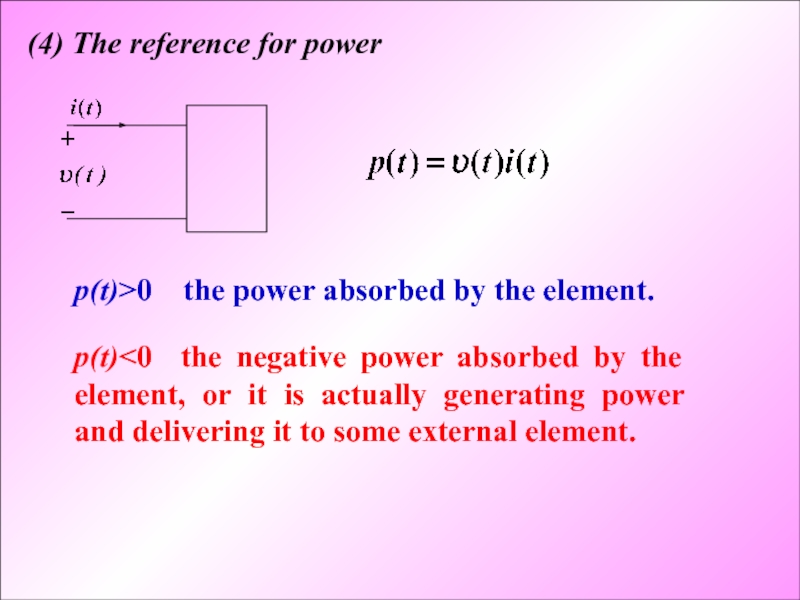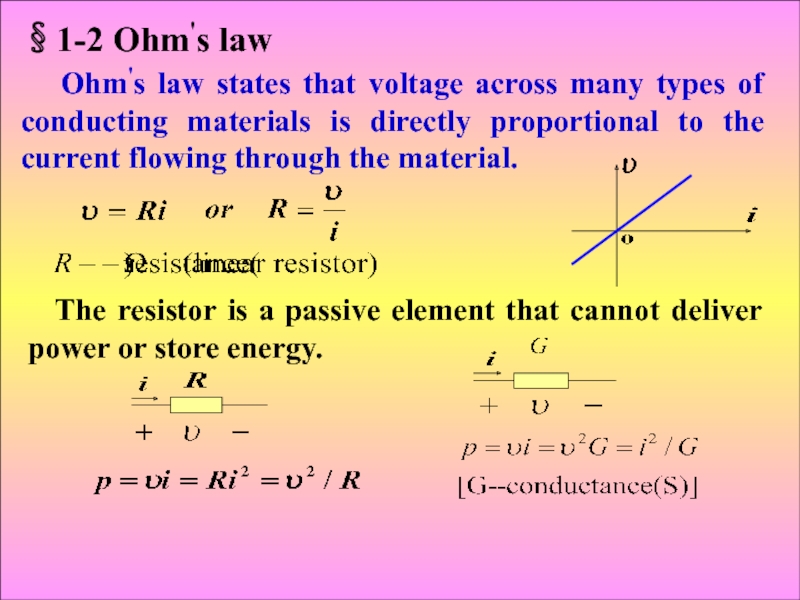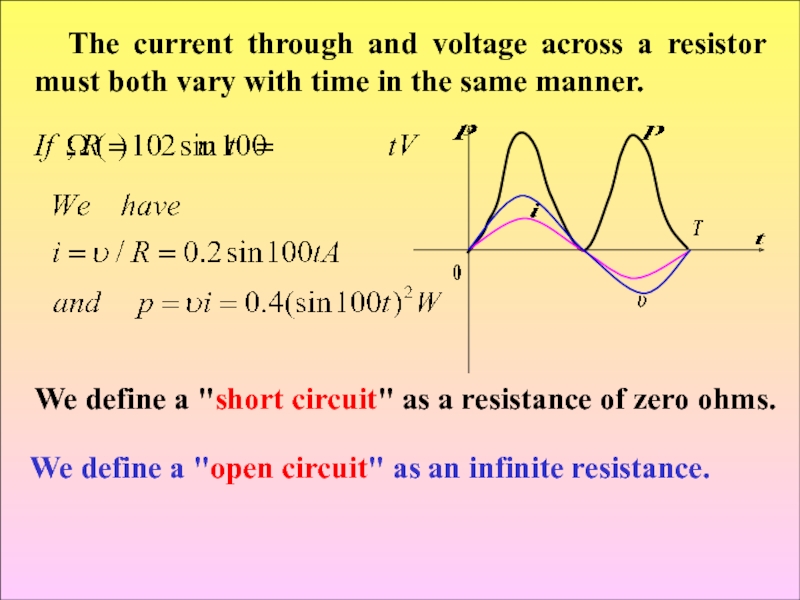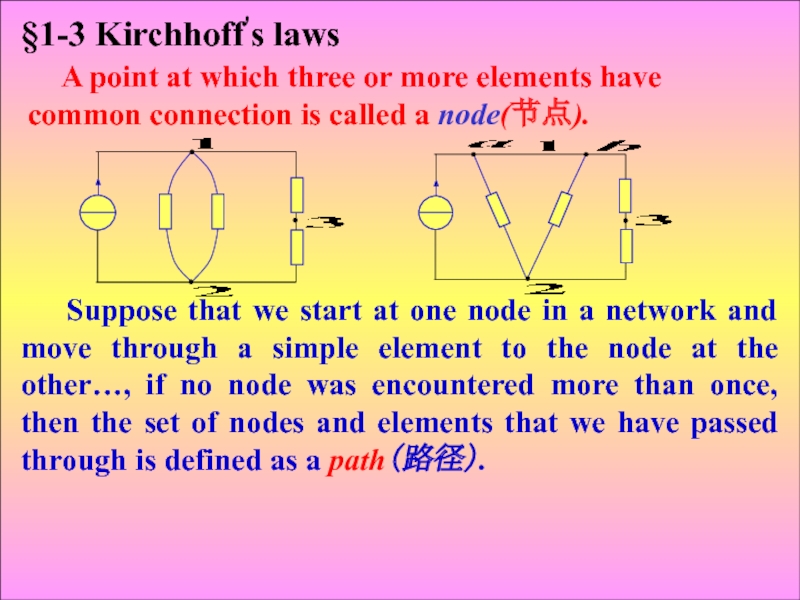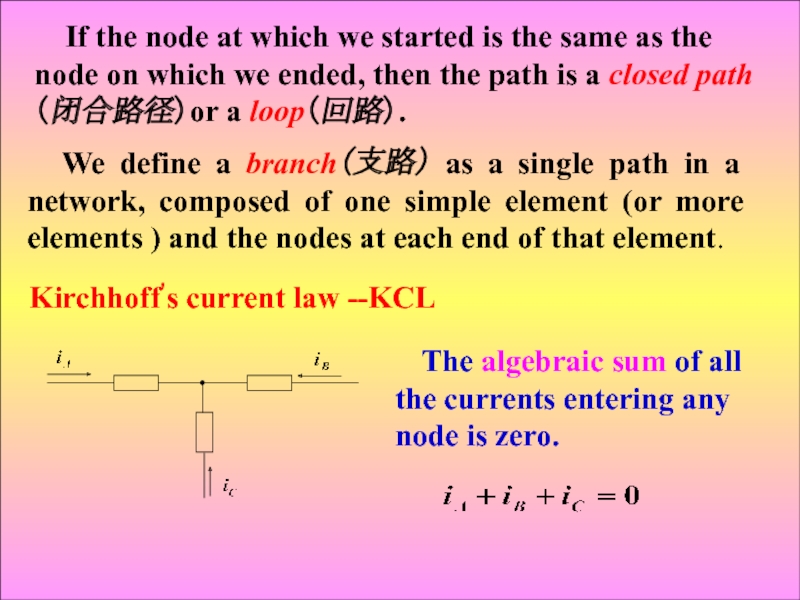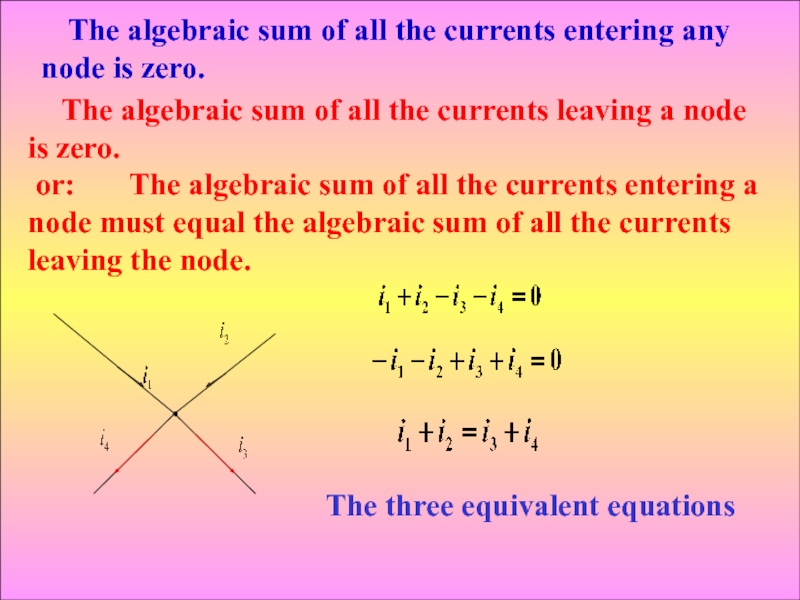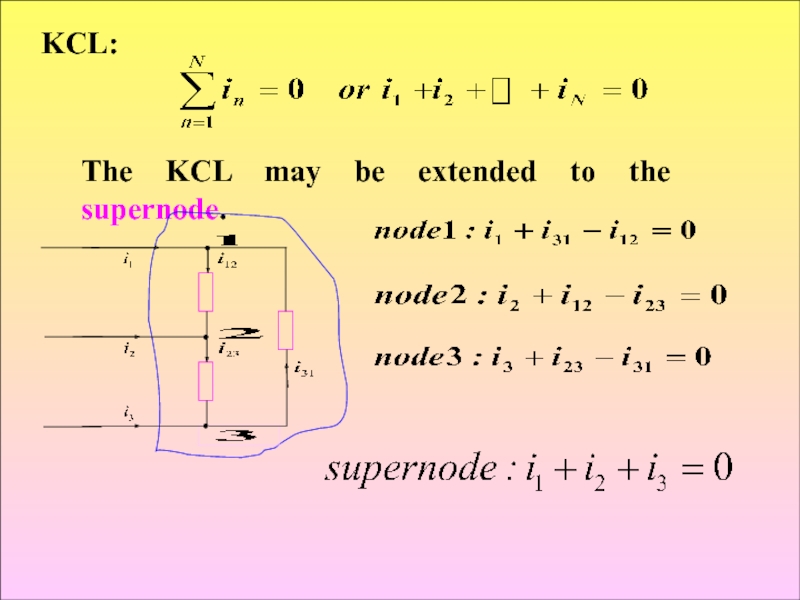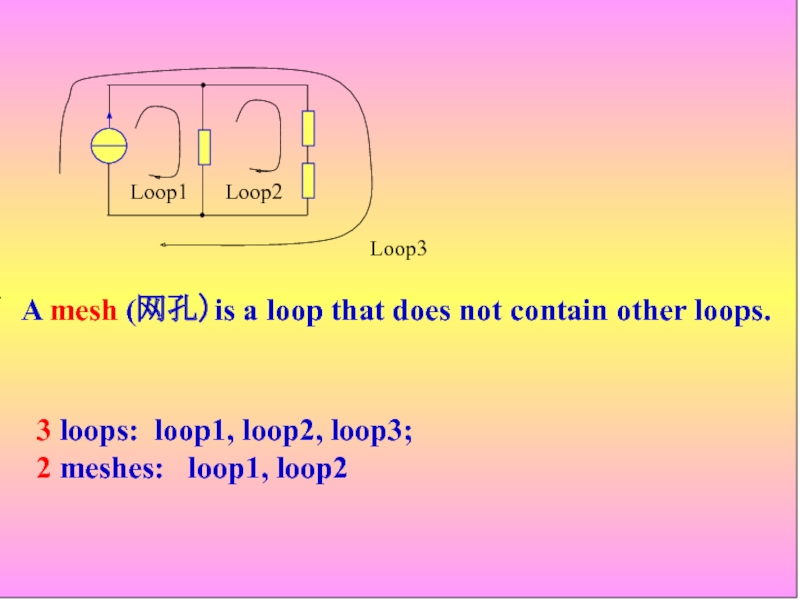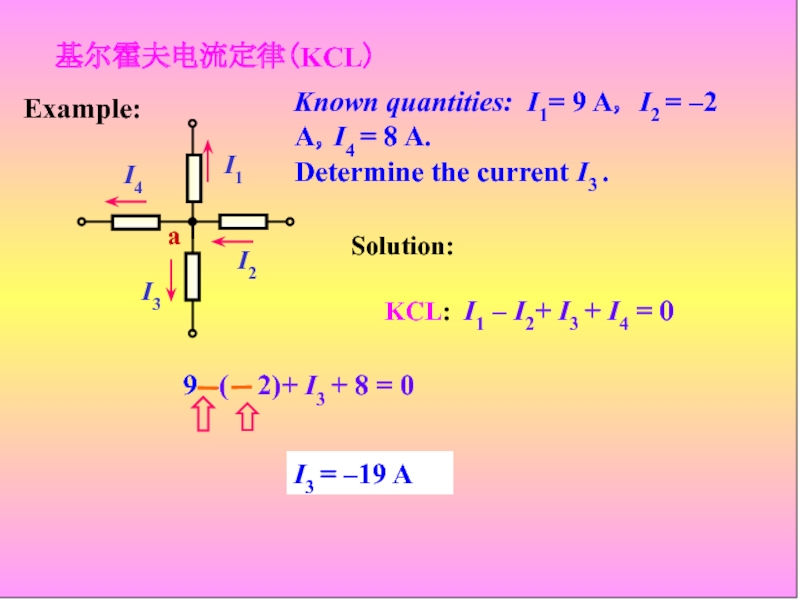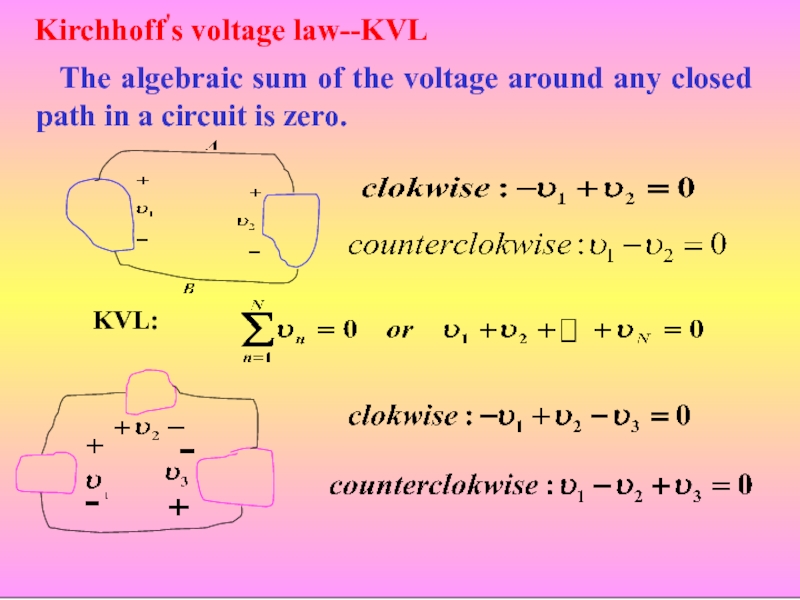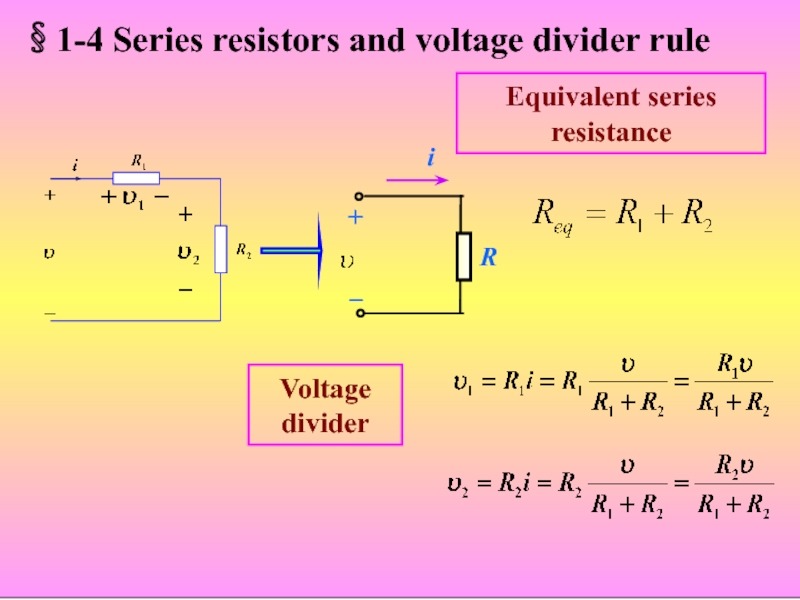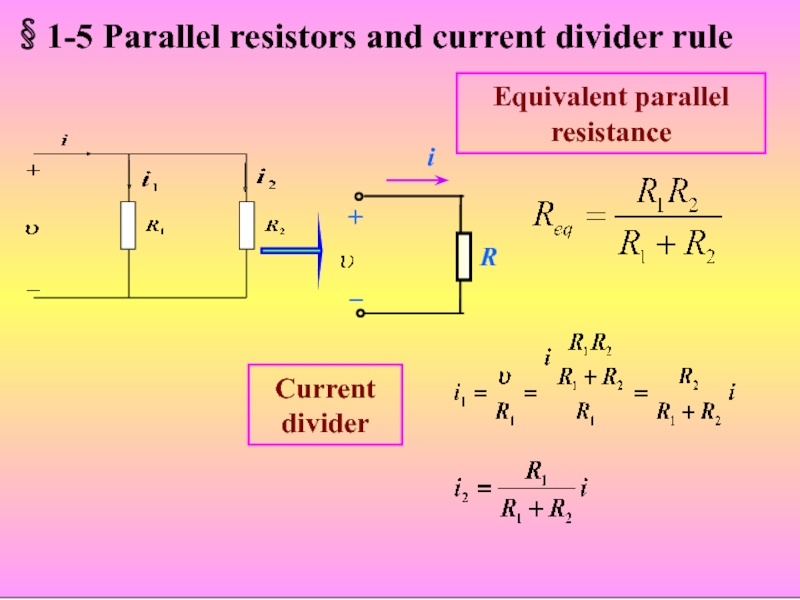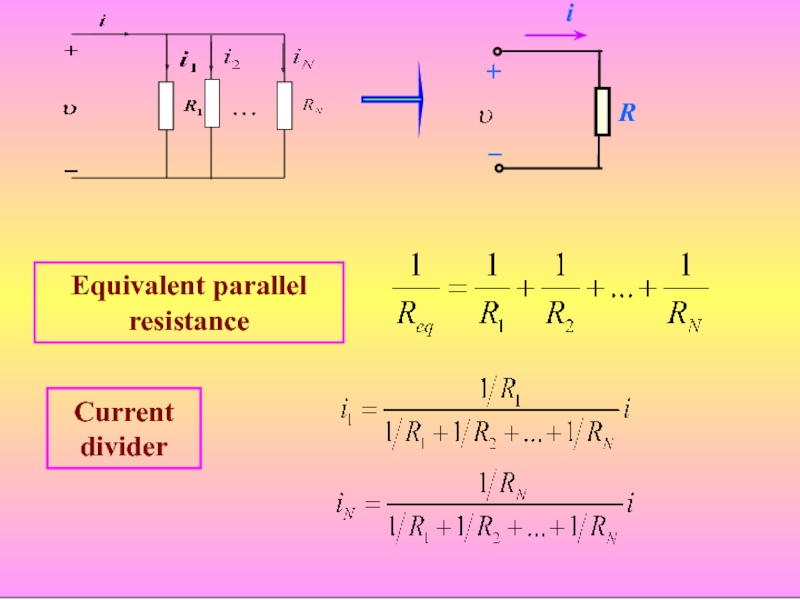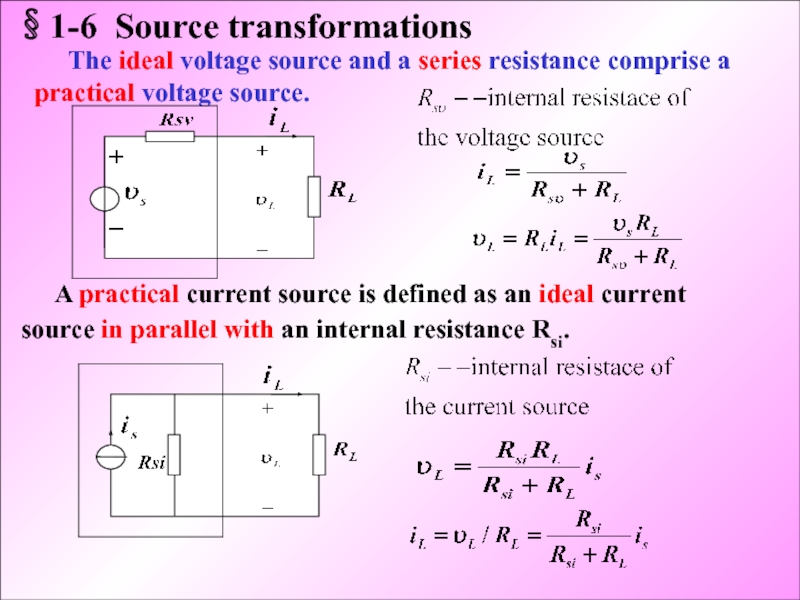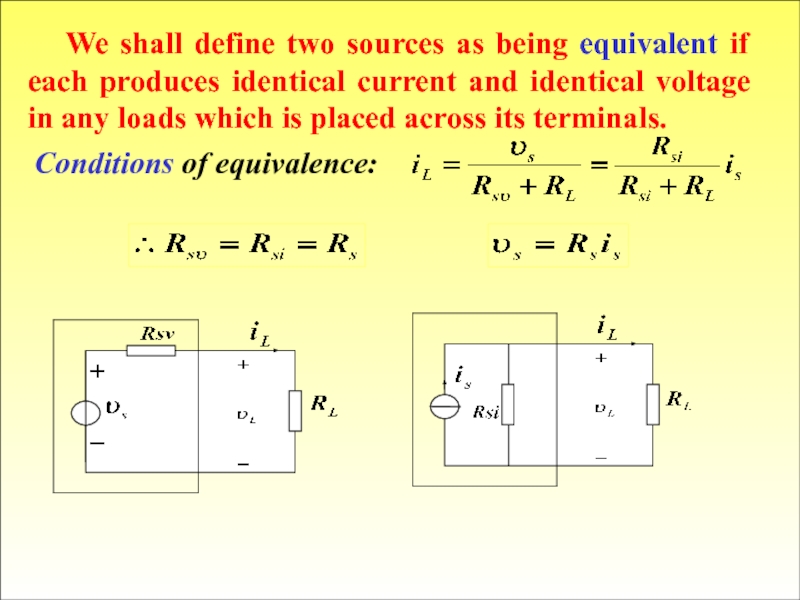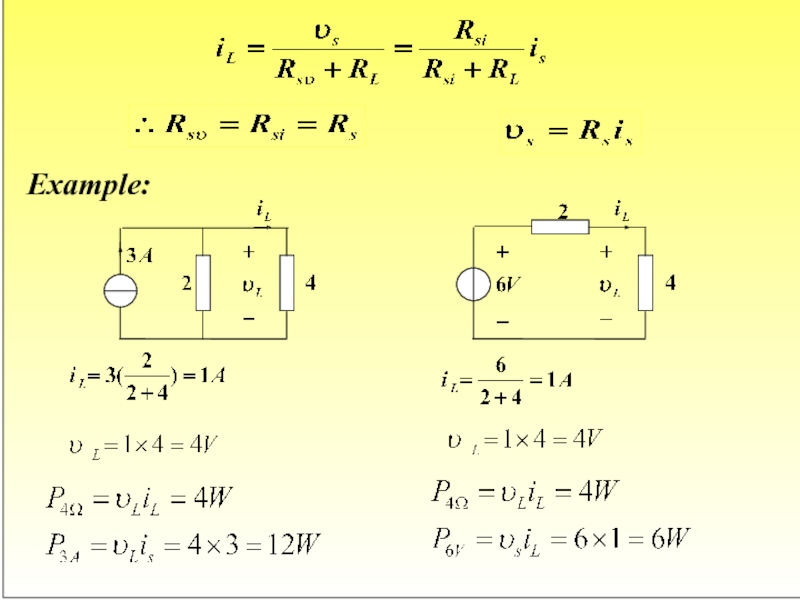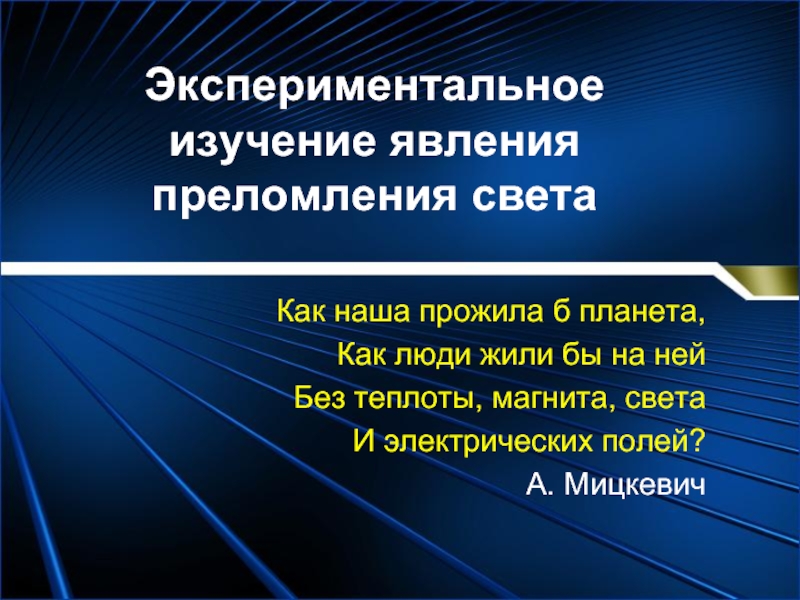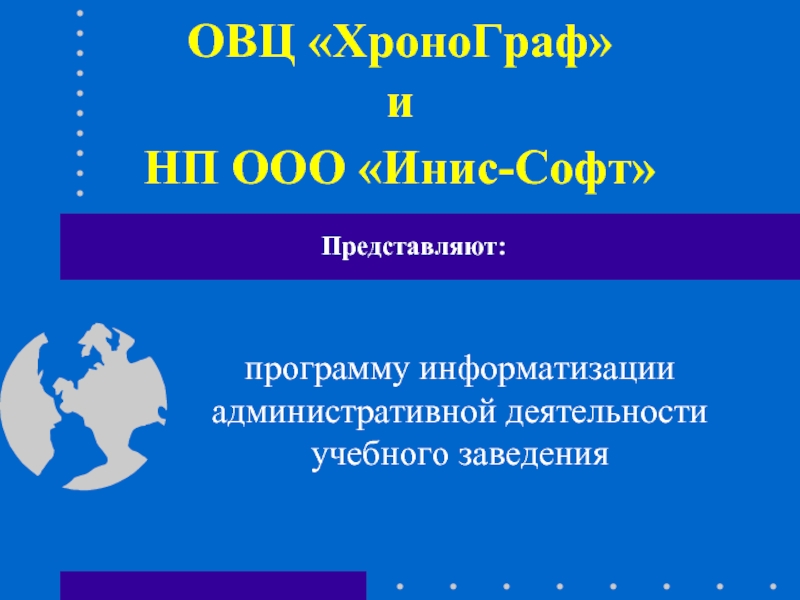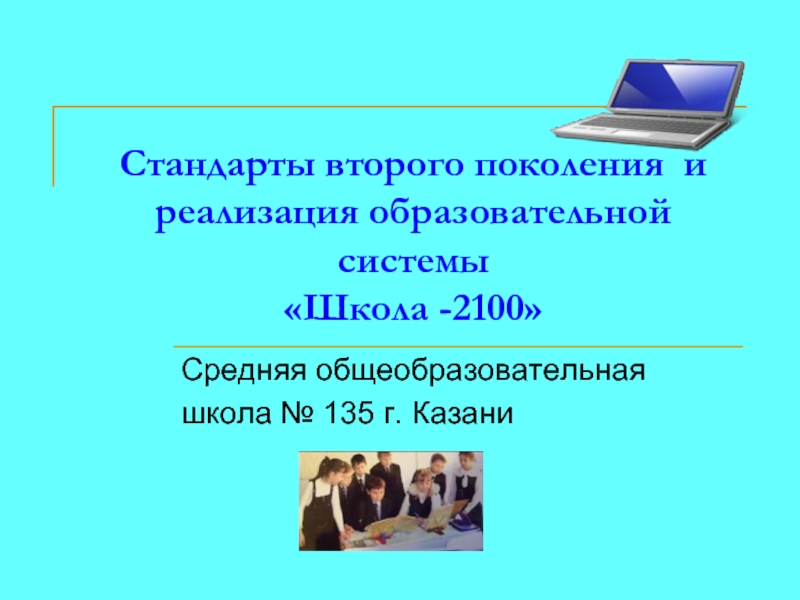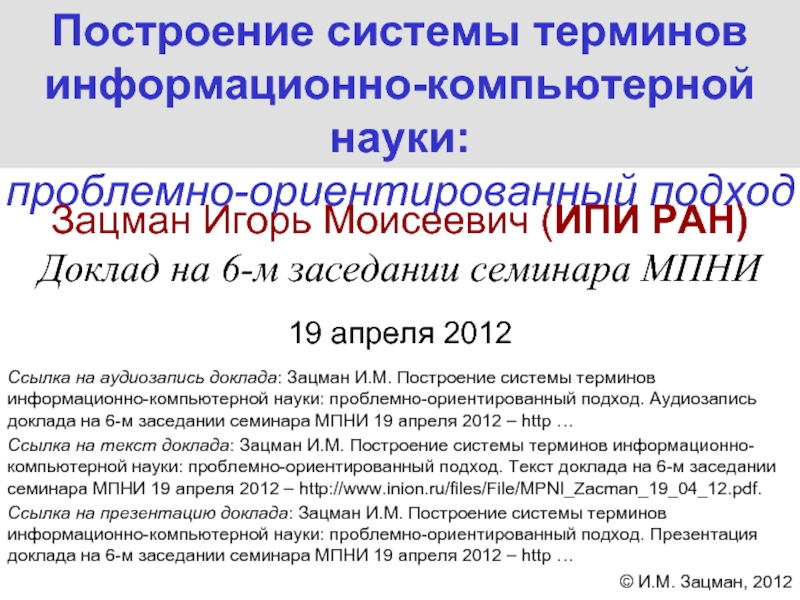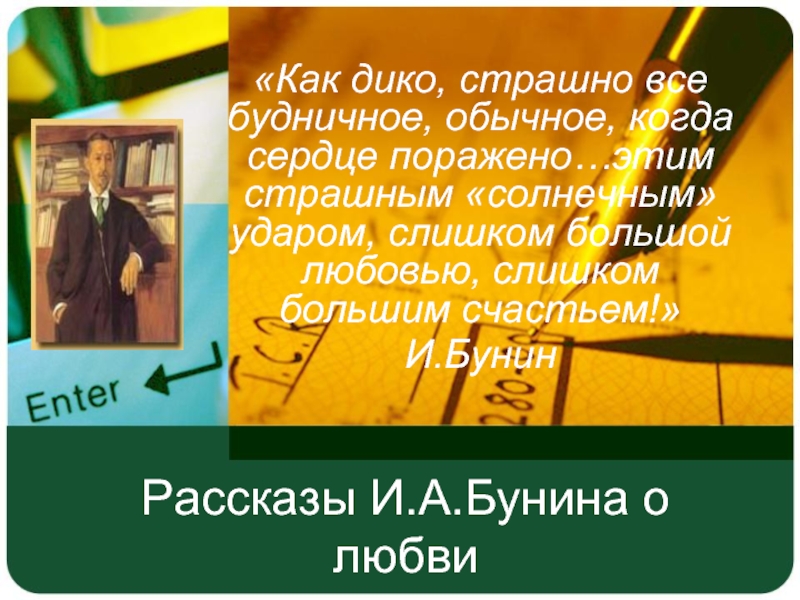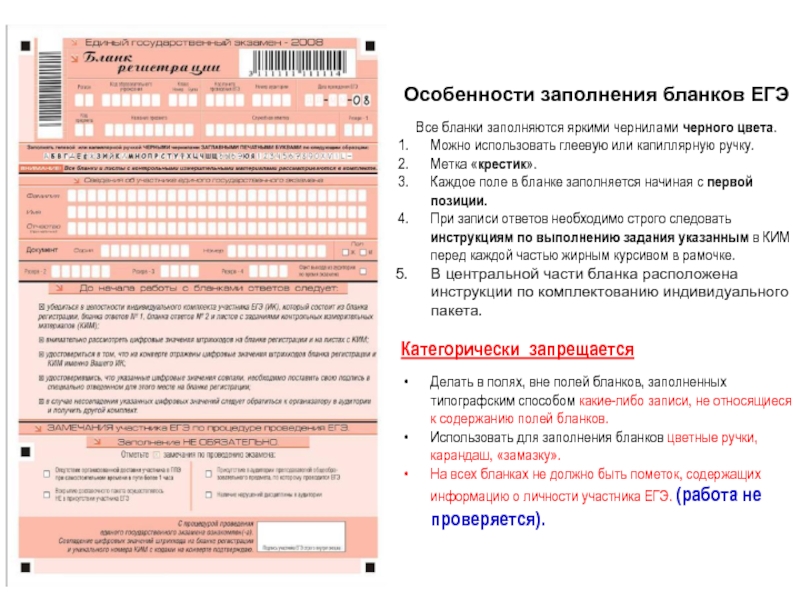- Главная
- Разное
- Дизайн
- Бизнес и предпринимательство
- Аналитика
- Образование
- Развлечения
- Красота и здоровье
- Финансы
- Государство
- Путешествия
- Спорт
- Недвижимость
- Армия
- Графика
- Культурология
- Еда и кулинария
- Лингвистика
- Английский язык
- Астрономия
- Алгебра
- Биология
- География
- Детские презентации
- Информатика
- История
- Литература
- Маркетинг
- Математика
- Медицина
- Менеджмент
- Музыка
- МХК
- Немецкий язык
- ОБЖ
- Обществознание
- Окружающий мир
- Педагогика
- Русский язык
- Технология
- Физика
- Философия
- Химия
- Шаблоны, картинки для презентаций
- Экология
- Экономика
- Юриспруденция
Industrial Electronics. Fundamentals of Electric Circuits презентация
Содержание
- 1. Industrial Electronics. Fundamentals of Electric Circuits
- 2. Chapter 1 Fundamentals of
- 3. Circuit R,
- 4. Learning Objectives: Identify the principal elements
- 5. §1 Fundamentals of Electric Circuits
- 6. The voltage independent source The
- 7. V0 = IS
- 8. (CCVS) (VCCS) (CCCS) (VCVS) Dependent (Controlled) Sources
- 9. 2. Network variables (网络变量) The systems
- 10. (4) Power -- p(t) (W,
- 11. 7 3. Reference directions(参考方向) (1) Reference
- 12. 7 (3) Reference conventions (惯例) for
- 13. (4) The reference for power p(t)0 the power absorbed by the element.
- 14. §1-2 Ohm's law Ohm's
- 15. The current through and
- 16. §1-3 Kirchhoff's laws
- 17. We define
- 18. The
- 19. KCL: The KCL may be extended to the supernode.
- 20. A mesh (网孔)is a loop that
- 21. 基尔霍夫电流定律(KCL) Example: Solution: KCL: I1
- 22. The algebraic sum of
- 23. Voltage divider Equivalent series resistance
- 24. Current divider Equivalent parallel resistance
- 25. Current divider Equivalent parallel resistance
- 26. §1-6 Source transformations
- 27. We shall define two
- 28. Example:
Слайд 2
Chapter 1
Fundamentals of Electric Circuits
Circuit is a current path,
Or elements combined in a certain way up.
Слайд 3
Circuit R, I, U, C, L, etc.
Voltage V
Charge Q=I*t
Resistance resistor R
Capacitance capacitor C
Inductance inductor L
Слайд 4
Learning Objectives:
Identify the principal elements of electric circuits:
Apply Kirchhoff’s laws to simple electric circuits and derive the basic circuit equations.
Compute the power delivered or absorbed by circuit elements.
Apply the voltage and current divider laws to calculate unknown variables in simple series, parallel, and series-parallel circuits.
Слайд 5
§1 Fundamentals of Electric Circuits
The resistor
The inductor
The capacitor
§ 1-1
Two active(有源)models
Three passive(无源)models
Слайд 6
The voltage independent source
The current independent source
The ideal voltage source:
Independent Sources
V
V0 = E
Is =
When R0 = 0, V = E, the source is called ideal voltage source.
R0 = 0
Слайд 7
V0 = IS R0
IS
R0 = ∞
When R0 = ∞ ,
The ideal current source:
Слайд 9
2. Network variables (网络变量)
The systems of units (单位制) : International system
Length [meter] (m) Mass [kilogram] (kg)
Time [second] (s)
(1) Current -- i(t), I ---- (A, mA, μA...)
The net time-rate of transference (传递) of charge is referred to as the flow of current.
(2) Energy (or work) -- w(t) (J)
Слайд 117
3. Reference directions(参考方向)
(1) Reference directions for current
(2) Reference directions for voltage
: Electron: negatively charged
Direction of current: is defined as the flow direction of positive charge.
Слайд 127
(3) Reference conventions (惯例) for two-terminal elements (R, L, C or
The relative (关联) reference directions
The reference arrow for the current variable enters the terminal, which is identified by the plus sign of the voltage reference polarity markings.
Слайд 13
(4) The reference for power
p(t)
p(t)>0 the power absorbed by the element.
Слайд 14
§1-2 Ohm's law
Ohm's law states that voltage across many
The resistor is a passive element that cannot deliver power or store energy.
Слайд 15
The current through and voltage across a resistor must
We define a "short circuit" as a resistance of zero ohms.
We define a "open circuit" as an infinite resistance.
Слайд 16
§1-3 Kirchhoff's laws
A point at which three or
Suppose that we start at one node in a network and move through a simple element to the node at the other…, if no node was encountered more than once, then the set of nodes and elements that we have passed through is defined as a path(路径).
Слайд 17
We define a branch(支路) as a single
Kirchhoff's current law --KCL
The algebraic sum of all the currents entering any node is zero.
If the node at which we started is the same as the node on which we ended, then the path is a closed path(闭合路径)or a loop(回路).
Слайд 18
The algebraic sum of all the
or: The algebraic sum of all the currents entering a node must equal the algebraic sum of all the currents leaving the node.
The three equivalent equations
The algebraic sum of all the currents entering any node is zero.
Слайд 20
A mesh (网孔)is a loop that does not contain other loops.
Loop1
Loop2
Loop3
3
2 meshes: loop1, loop2
Слайд 21
基尔霍夫电流定律(KCL)
Example:
Solution:
KCL: I1 – I2+ I3 + I4 = 0
Known quantities: I1=
Determine the current I3 .
9 –( – 2)+ I3 + 8 = 0
I3 = –19 A
Слайд 22
The algebraic sum of the voltage around any closed
Kirchhoff's voltage law--KVL
KVL:
Слайд 23
Voltage divider
Equivalent series resistance
R
i
+
–
§1-4 Series resistors and voltage divider rule
Слайд 24
Current divider
Equivalent parallel resistance
R
i
+
–
§1-5 Parallel resistors and current divider rule
Слайд 26
§1-6 Source transformations
The ideal voltage source and a
A practical current source is defined as an ideal current source in parallel with an internal resistance Rsi.
Слайд 27
We shall define two sources as being equivalent if
Conditions of equivalence:

